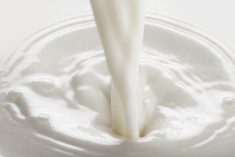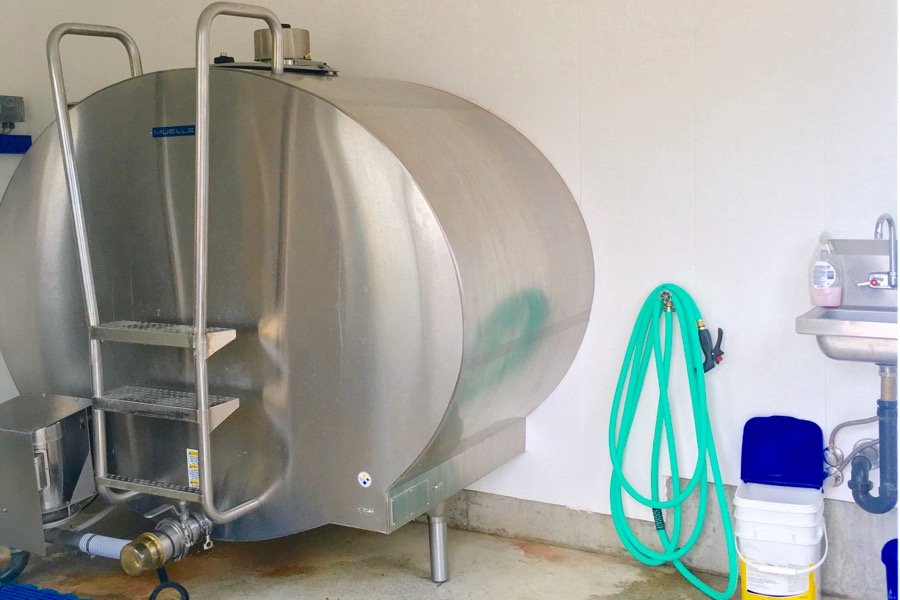Strong demand for high-butterfat dairy products, soft demand for fluid milk and maxed-out capacity to make skim milk powder have led Ontario’s dairy farmers in recent weeks to dump surplus skim milk in lagoons.
A letter to producers last Friday from Dairy Farmers of Ontario board chairman Ralph Dietrich, intended to “put to rest the rumour” that DFO was being forced to dump raw milk, instead wound up as a lead story this week at the Globe and Mail as it detailed the circumstances leading to skim milk dumping.
Read Also

U.S. grains: Soybeans touch 16-month high, wheat firm on Chinese demand hopes
Chicago soybean futures hit 16-month highs on Monday on expectations China will restart large-scale U.S. soy buying after the two countries reached a deal to de-escalate their trade war.
DFO, in a separate release Monday, emphasized the product being dumped is a livestock feed-grade byproduct of the demand for butterfat and “if there was excess product to feed people in need, we would provide it.”
Total dairy demand has been strong “for the better part of two years,” Dietrich wrote in last Friday’s letter to farmers, but most of that growth has been in products such as butter, creams, cheese and yogurt.
“The weakest segment of the market is fluid milk, although the trend to lower-butterfat milk seems to have been reversed.”
The result has been “unprecedented” growth in all-milk quota, by 6.5 per cent in just over a year, and “the issuance of incentive days,” said Dietrich, who farms at Mildmay, about 90 km northwest of Guelph.
However, he wrote, “we are currently testing the limits of system capacity, with the limiting factor being the amount of skim milk that can be dried into skim milk powder.”
DFO’s board, he said, has thus been “challenged to market all the milk every day.” However, he added, some plants are able to separate the milk without generating more powder.
Thus, he said, “there have been days in the last couple of weeks when we have had to dispose of skim milk in lagoons… That is obviously not an ideal situation but better than the alternative. There is still a need to make more butter and I don’t see that changing.”
The Globe’s Barrie McKenna on Friday quoted DFO’s communications director Graham Lloyd as saying Ontario farmers have produced 5.4 million litres of excess skim in the past month, and roughly 800,000 litres — worth about $500,000 as livestock feed — have instead gone into farm lagoons since late May.
A “similar situation exists in all parts of the country,” Dietrich said in his letter, noting “there have been days when Ontario has been able to move some milk into Quebec and some days when Ontario has been able to help Quebec.”
Today, however, “we continue to be challenged on a daily basis and there is no obvious end in sight, unless the normal seasonal production trend kicks in or there is a prolonged hot spell.”
Dairy Farmers of Manitoba chairman David Wiens, for another example, told the Manitoba Co-operator’s Shannon VanRaes last month that the province’s dairy sector, strained by both increased demand for dairy and limited processing capacity, has had to ship 75,000 lites of milk west each day.
Part of the challenge was dairy giant Saputo’s move to shut its processing plant in Winkler, while expansions at the company’s Brandon site have faced delays, Wiens said.
Saskatoon processors who’ve handled the Manitoba surplus are now themselves at capacity, he added, leading to a situation where “potentially milk will cascade throughout the provinces right through to Abbotsford (B.C.).”
McKenna on Friday also quoted an internal DFO report, which warned of rising imports of “designer” milk protein ingredients from the U.S. and elsewhere, replacing fluid milk in the making of cheese, yogurt and other goods.
“If milk protein imports continue to grow, the industry will no longer be able to sustain itself as there will be no market for the (skim)… leaving the industry no choice but to dump skim milk or import more butter.”
Critics quoted by the Globe blamed Canada’s supply-managed dairy system for producing such surpluses, but DFO emphasized in its release Friday farmers “are producing the right quantity of milk” for Canada’s needs and suggestions to the contrary are “simply not accurate.”
International dairy values have also fallen in recent months, with average milk powder selling prices dropping Tuesday to US$2,409 per tonne, their lowest level since August 2009, Reuters reported.
“It will become harder for prices to recover as the volume of milk powder on offer increases as the new dairy season progresses,” analysts for New Zealand-based AgriHQ said in a note Reuters quoted Wednesday. — AGCanada.com Network










